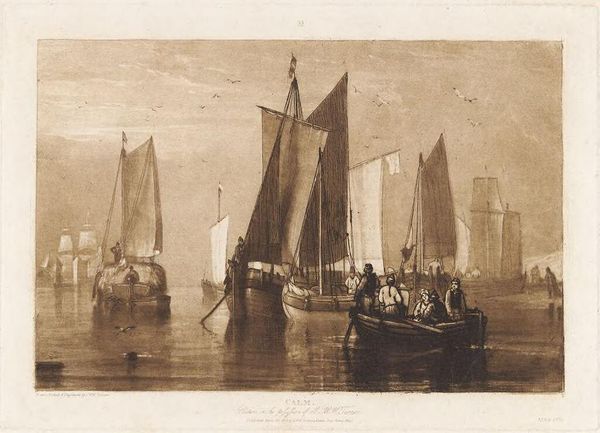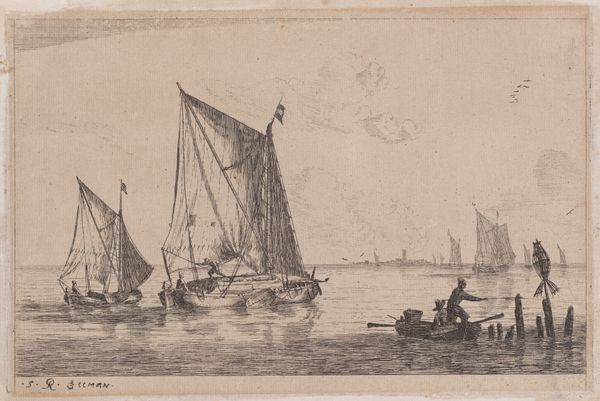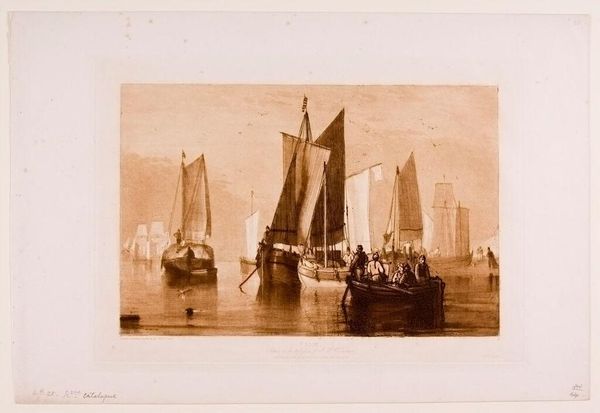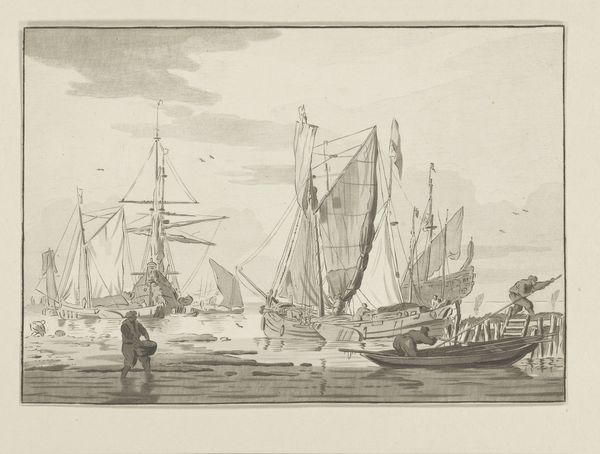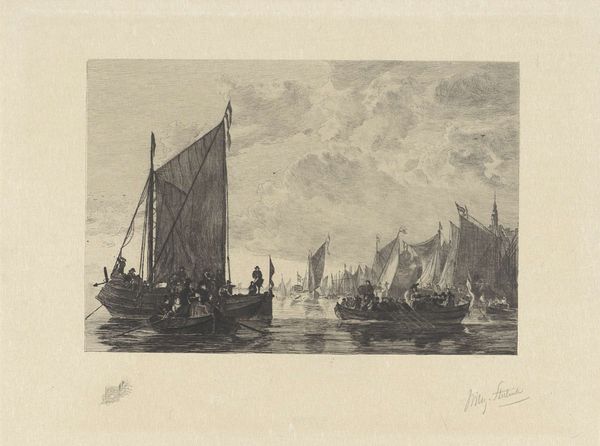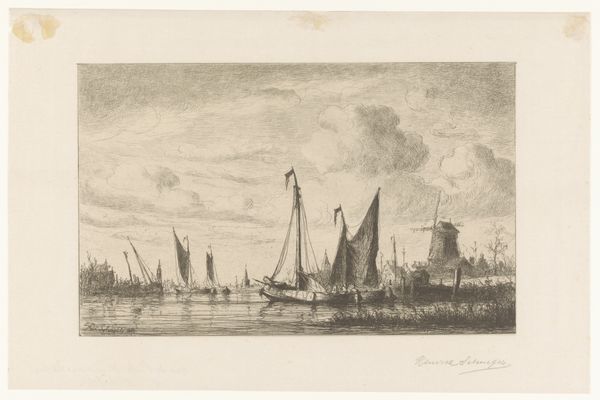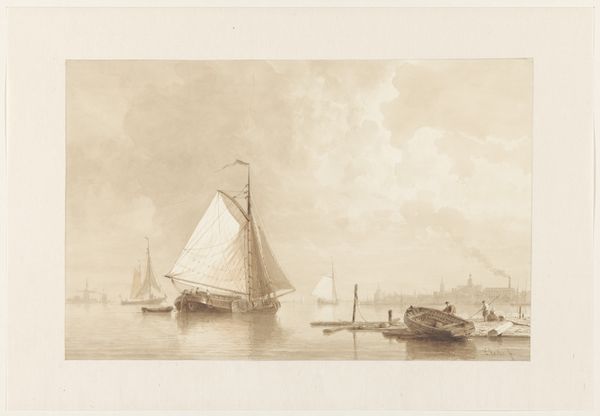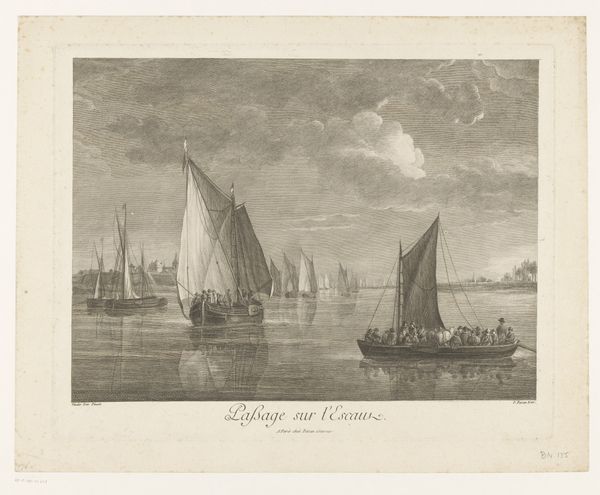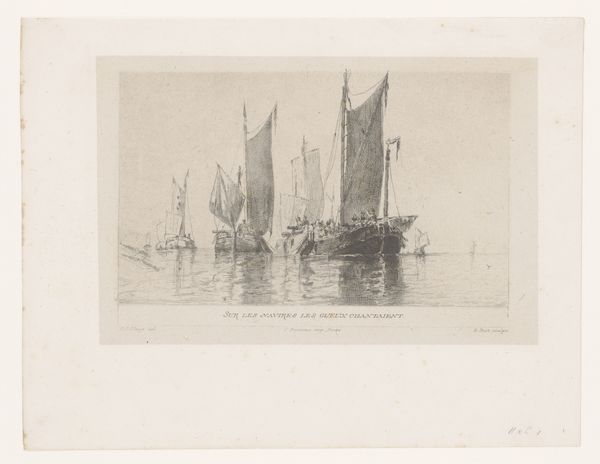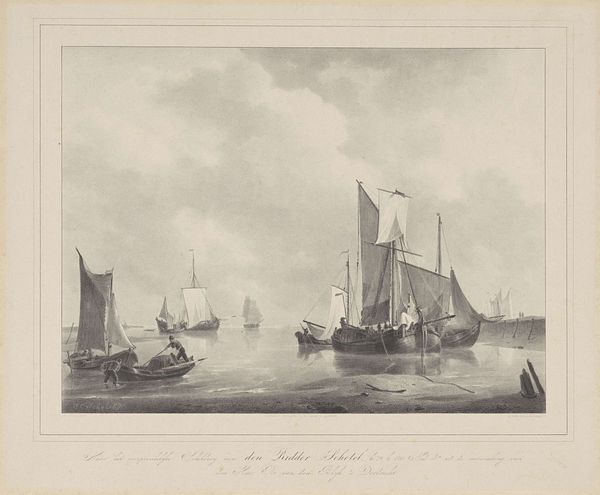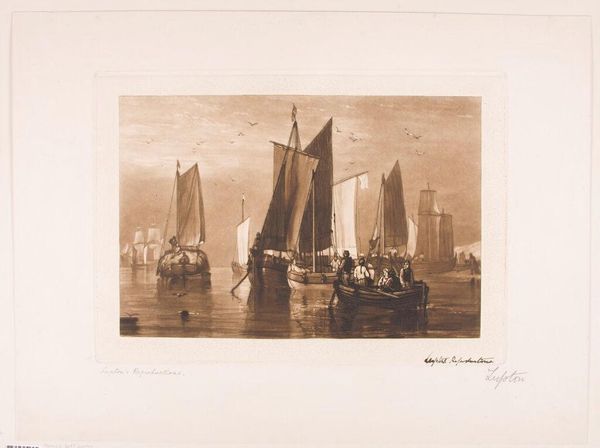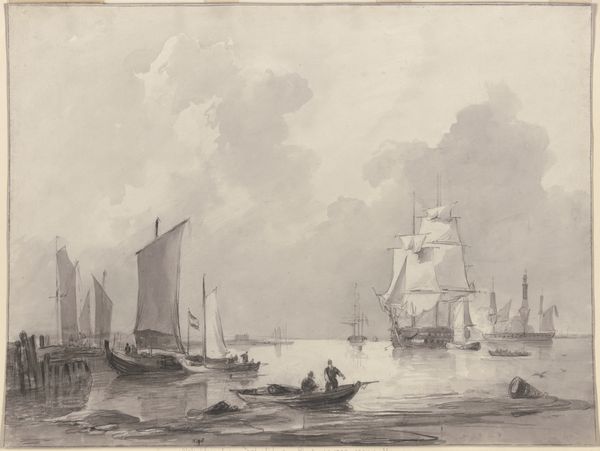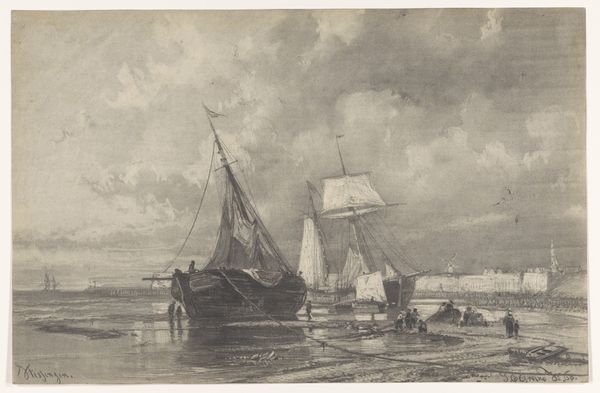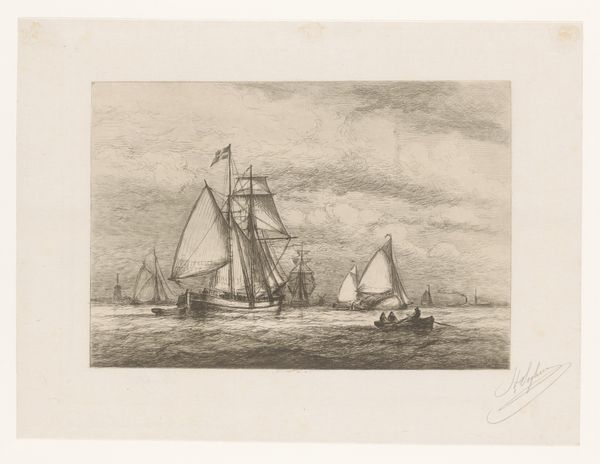
Calm (Liber Studiorum, part IX, plate 44) 1812
0:00
0:00
aquatint, print, etching, plein-air
#
aquatint
# print
#
etching
#
plein-air
#
landscape
#
romanticism
Dimensions: plate: 7 x 10 9/16 in. (17.8 x 26.8 cm) sheet: 8 1/2 x 12 in. (21.6 x 30.5 cm)
Copyright: Public Domain
Curator: Turner's "Calm," from his Liber Studiorum series, is a fascinating etching and aquatint, completed in 1812. Part of a larger body of prints intended for wide circulation, it showcases Turner's mastery of the landscape genre. Editor: My initial impression is one of subdued beauty. There's a quiet stillness captured here, the sepia tones lending a sense of nostalgia, and the blurry textures suggest a foggy or early morning scene, and create this kind of nostalgic effect Curator: Indeed. Turner's printmaking was highly dependent on collaborations. Skilled engravers aided his ambition of making high art more available for middle class consumption. The different states of these prints themselves offer insight into Turner’s own working processes. Editor: Examining the materiality of this piece—the specific papers used for the prints, the ways the aquatint was layered, and how Turner and his workshop would go back into plates again and again tells me more than his typical oil landscapes ever could. Were the papers locally sourced? What about the acids and grounds? Curator: The socio-political implications of readily available landscape imagery are equally interesting. At this time, England was undergoing dramatic transformations due to industrialisation. Views like these speak to the nostalgia and longing for a pre-industrial rural past, and the need to romanticize that notion, really. Editor: So it becomes about more than just art, right? These prints and others are documents, witnesses of changing times in Turner's England. If he hadn't made prints like these that were attainable, affordable commodities, could his views ever truly speak to public sentiments or even class politics? Curator: And I think that's key here, looking past the beauty and diving into the print's production and socio-political setting unveils this piece to be as calm as it is stirring. Editor: Absolutely, examining those intertwined networks shows Turner engaging directly with the political conditions of art and artistic labor. It provides insight into his own negotiation of art making as both concept and production.
Comments
No comments
Be the first to comment and join the conversation on the ultimate creative platform.
